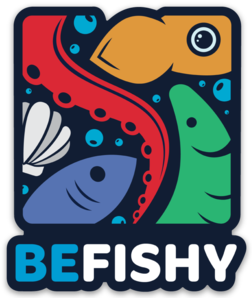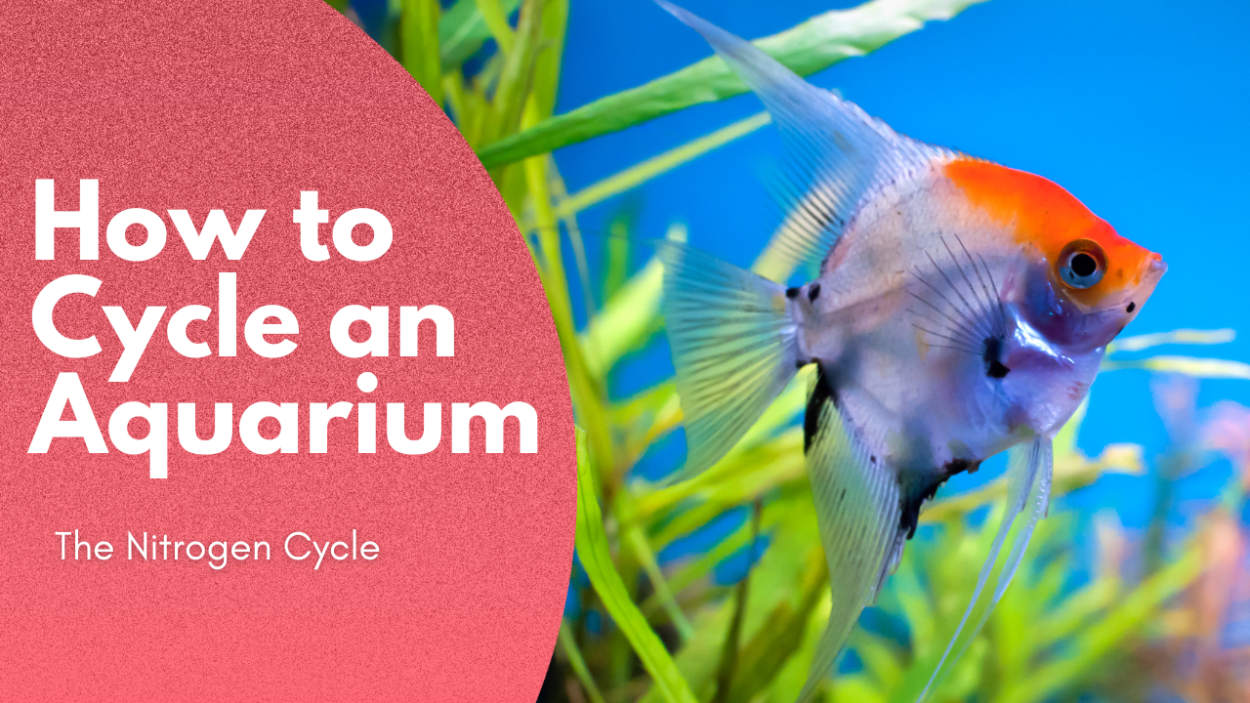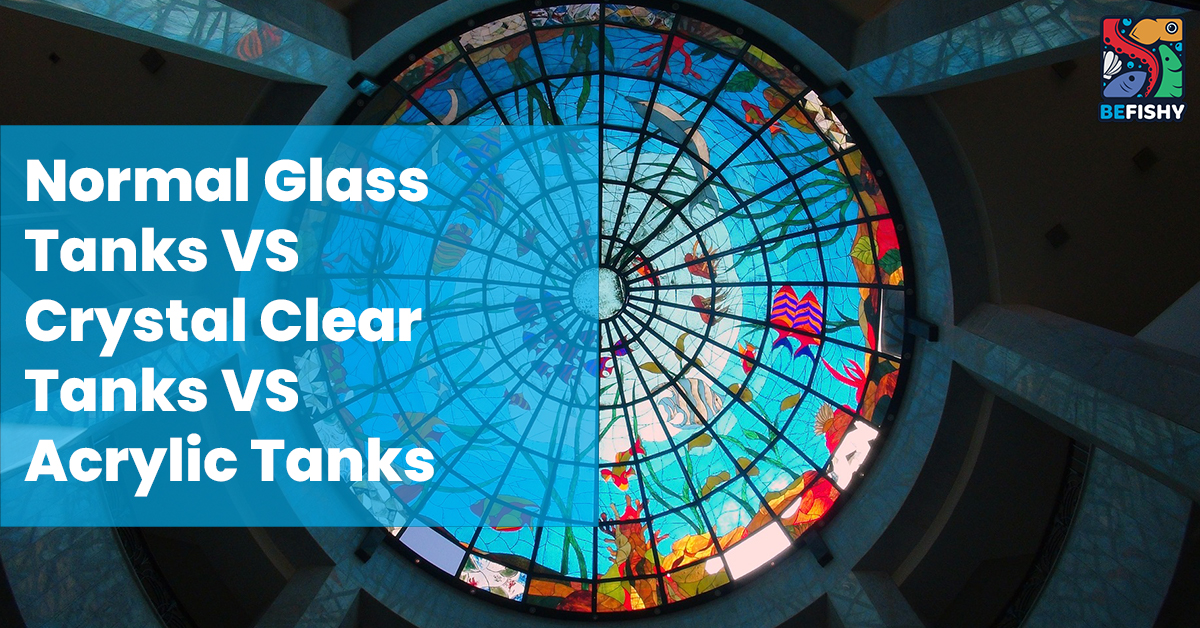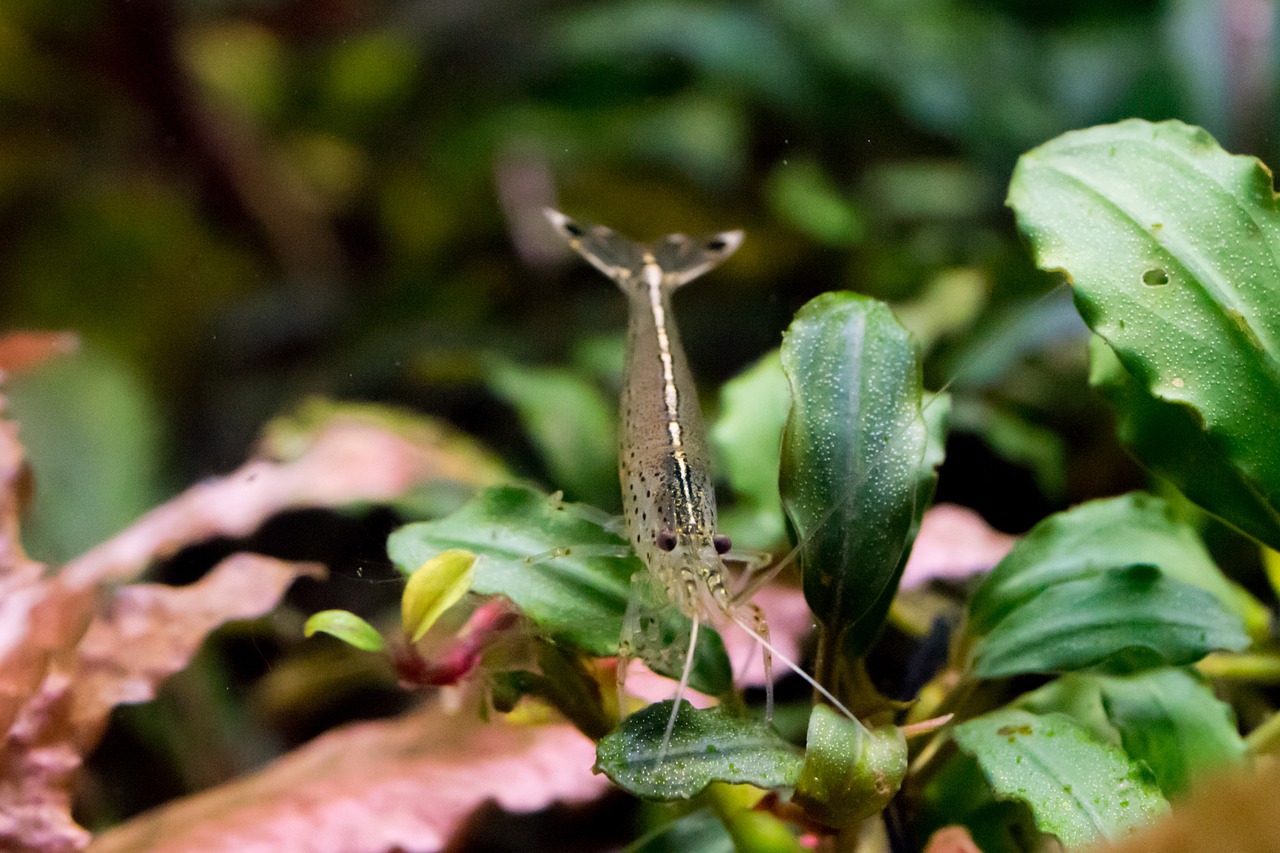The nitrogen cycle is the most basic sciency thing you’ll need to understand about the aquarium hobby. It is very important in order to keep a thriving and successful aquarium. Grab your goggles and lab coats! We’re about to dive deep into THE NITROGEN CYCLE.
In the wild, fish and other aquatic life very rarely suffer from a “crashed cycle” as Mother Nature is great and takes great care of its inhabitants. However, in a new aquarium, there are NO ready beneficial bacteria, organisms and moving water to help with waste management.
An Aquarium is a human-made mini ecosystem. A fully cycled aquarium is needed in order for this mini ecosystem to thrive and survive. In order for an aquarium to be fully cycled, it requires a right amount of nitrifying bacteria (beneficial bacteria) to help with waste management of an aquarium.
All living things produce waste in one form or another. In an aquarium, fish waste, uneaten fish food, decaying plant matter & even dead live stock contribute to increased ammonia and carbon dioxide levels. Carbon dioxide will be taken up by live plants and released into the atmosphere. However, ammonia still remains inside the aquarium.
“An increase in pH & temperature will cause an increase in levels of unionized ammonia (NH3).”
This is when our first nitrifying bacteria/beneficial bacteria, known as nitrosomonas bacteria makes an appearance and introduces itself as the main character. Nitrosomonas bacteria will convert the harmful unionized ammonia to Nitrites (NO2−).
However, nitrites are still harmful to fish and other aquatic creatures. As nitrosomonas bacteria build up and are able to lower and maintain ammonia at a safe level, Nitrobacter bacteria will start to build up. Nitrobacter bacteria will then convert Nitrites (NO2−) to Nitrates (NO3-).
Nitrates are only harmful to aquatic creatures at very high levels. In order to decrease the levels of nitrates inside the aquarium, waterchanges need to be performed. Plants will also remove nitrates to a certain extent.
“Remember, cleaner fish produce waste too!”
During the cycling process, you will see an increase and decrease of ammonia, nitrites & nitrates levels. At first, ammonia, nitrites and nitrates readings will be high. Ammonia levels will drop first, followed by nitrites and then nitrates. A complete cycle is identified when ammonia and nitrites levels are at 0 and nitrates are less than 20 ppm. Please note that a reading of 0 ammonia, 0 nitrites and 0 nitrates, even in a scarcely planted tank is NOT considered a fully cycled tank. In this case, major cycle crashes are expected to happen so you will need to monitor and cycle your tank properly.
“Nitrosomonas & Nitrobacter bacteria’s optimal temperature for growth & metabolism is at 30-35°C/86-95°F.”
Now that we understand what THE NITROGEN CYCLE PROCESS is, let’s look into what would happen to our inhabitants if they are exposed to high levels of ammonia, nitrites and nitrates.
High Ammonia Level
– Ammonia level reading should always remain 0.
– Signs of ammonia toxicity include lethargy, loss of appetite, hovering at the bottom of the tank especially for surface dwelling fish, gasping at the surface of the water, gill damage or inflammed gills & red streaks or inflammation of the eyes, anus and fins.
High Nitrites Level
– Nitrites level reading should always remain 0.
– Nitrites are known as “aquatic creature killers” as they are harmful, even in small amounts.
– Nitrites decrease the ability of fish’s blood to carry Oxygen. (Brown-blood disease)
– Signs of nitrites toxicity include gasping at the surface of the water, hanging near the water outlet, tan or brown gills, rapid gill movements and lethargy.
High Nitrates Level
– Nitrates are harmful in large amounts.
– Signs of nitrates toxicity include lethargy, loss of swim bladder function, glazed eyes, very erect fins, unaware of its surroundings and loss of balance.
Therefore, a healthy and fully cycled aquarium consists of :
– A good, massive amount of beneficial bacteria colonization.
– Zero Ammonia
– Zero Nitrites
– Generally, less than 20 ppm of Nitrates (Depends on type of fish)
So, HOW do we cycle a tank exactly? There are a few methods available.
Before we begin, a few things to keep in mind:
- An aquarium test kit is required to test your water parameters.
- Ensure to use dechlorinated water when cycling a tank.
- Run your filters with filter media or sponges to help house beneficial bacteria.
- Run your filters or add an air stone to oxygenate the tank. Beneficial bacteria are living creatures and require oxygen to breathe.
- You can add your desired substrate into the aquarium at the start of a cycle. This helps in housing beneficial bacteria.
- If you are cycling a brackish or saltwater aquarium, increase the salinity level to your desired salinity/SG level straight away. There will be a higher risk of the cycle crashing when salinity is increased slowly, over a period of time.
- Freshwater bacteria and saltwater bacteria are DIFFERENT. At SG 1.005, freshwater bacteria starts to die off.
HOW TO CYCLE AN AQUARIUM?
FISHLESS CYCLE
1. Pure Ammonia (No scents and other additives) :
Pure household ammonia can be used to kick start an aquarium cycle.
– Depending on the size of your aquarium, place a couple of drops of pure ammonia until the ammonia reading becomes 4 or 5 ppm.
– Then, wait for ammonia to return to 0.
– Keep repeating the process until ammonia levels become 0 in 10 to 12 hours time.
– If ammonia levels do drop BUT not in 10 to 12 hours time, dose ammonia again to 4ppm or 5 ppm.
– This may take a few weeks. Do not perform waterchanges during this process.
– Once ammonia levels have become safe (0 ppm) in 10 to 12 hours time, check for nitrites if it’s at 0 as well.
– Once ammonia and nitrites readings are at 0, if you’ve cranked up temperature in the tank, bring it down to your fish or inhabitants required temperature range.
– Then, perform a large waterchange to help reduce the nitrates level.
– When ammonia level is 0, nitrites level is 0 and nitrates level is less than 20 ppm, it is safe to place fish and inhabitants into your aquarium.
2. Ghost feeeding a tank and introducing dead shrimps/extract/shrimp shells :
– Ghost feeding is when a person feeds an aquarium, while no fish or inhabitants are inside the aquarium.
– Basically, it works the same way as introducing pure ammonia source into your aquarium. (Fish food increases ammonia level.
– On its own, ghost feeding does tend to take a longer time to cycle but it can be combined with the pure ammonia method to supplement the cycling process.
– Personally, we’re not fans of introducing dead shrimps with shells on/shrimp extract into the tank as it smells very bad and stinks up the aquarium. Dead shrimps are also an ammonia source to help kick start the nitrogen cycle.
3. Bacteria in a Bottle:
Perhaps a controversial method but it does work when done properly. Please note that the way “bacteria in a bottle” products are transported and stored are important as they are quite sensitive to temperature.
– If you are cycling a freshwater aquarium, use “Bacteria in a bottle” products made for freshwater set ups.
– If you are cycling a brackish or saltwater aquarium, use “Bacteria in a bottle” products made for saltwater aquariums.
– This is because the beneficial bacteria for both freshwater and saltwater aquariums differ. At SG 1.005, freshwater bacteria starts to die off.
– For a faster cycling process, using pure ammonia in combination with “bacteria in a bottle” products help tremendously. A product that we recommend is Dr. Tim’s Aquatics One & Only Live Nitrifying Bacteria.
– When levels are safe, (Ammonia 0, Nitrites 0, Nitrates are less than 20 ppm), it is safe to introduce live inhabitants into your aquarium.
4. Seeding an Aquarium
– Personally, this is our favorite way of cycling an aquarium. It is quick and easy.
– Live, nitrifying beneficial bacteria mainly inhabit filter medias, sponge filters and aquarium substrate.
– For freshwater aquariums, introducing filter medias or sponge filters from a well established, matured and cycled freshwater aquarium into your new aquarium can help in giving your tank an instant cycle! (Please check water parameters before adding live inhabitants into your aquarium)
– For brackish and saltwater aquariums, again, introducing filter medias or sponges from a well established, matured and cycled brackish or saltwater aquarium can help in giving your new aquarium a boost in the cycling process as well. An added bonus to saltwater aquariums is by introducing live rocks. Live rocks are covered in beneficial bacteria and ensures an instant cycle. (Please check water parameters before adding any live inhabitants into your aquarium)
– When introducing these filter medias, sponges or rocks, ensure they are from a healthy aquarium. The last thing you want to introduce into your new tank are opportunistic bacteria, parasites and other diseases.
“Beneficial bacteria are aquatic and need to be submerged in dechlorinated water at all times. Keeping them out of water or in chlorinated water will kill these bacteria.”
FISH-IN CYCLE
**We do not recommend this method**
– There is a method called the fish-in cycle. It is done by introducing live inhabitants such as fish or ghost shrimps into an uncycled aquarium.
– These animals are usually considered “sacrificial lambs” to help start the cycle.
– The way it works is, these fish or shrimps will start to produce waste, thus ammonia. The ammonia then helps jump start the cycle cascade.
– As we’ve discussed earlier, these fish or inhabitants will be exposed to plenty of health issues due to the fluctuations of levels.
– For this method, plenty of waterchanges need to be performed in order to keep these levels safe for these “sacrificial inhabitants”.
– Due to this, this is NOT our recommended cycling method.
FREQUENTLY ASKED QUESTIONS (FAQ)
- How long does it take to cycle an aquarium? – Every aquarium differs in the duration of a complete cycle. Thus, there is no set duration. When ammonia level is 0, nitrites is 0 and nitrates are less than 20 ppm, is when you know that your aquarium is fully cycled.
- Can I use water from an established tank to start my cycle? – No. Beneficial bacteria inhabit mainly in your filter media, sponges and substrate. They do not inhabit the water column. Transferring water from an established tank into your new tank is just moving “dirty water” to your new aquarium!
- What is a “crashed cycle”? – When there are abnormal levels of ammonia, nitrites and nitrates found in an aquarium, even after it has been cycled. It could happen due to a couple of reasons such as introducing certain type of medicine (Methylene Blue & antibiotics) into your aquarium, drastic shift in salinity level, excessive cleaning of aquarium filters and aquarium, excessive feeding and a heavily, overstocked aquarium with inappropriate amount of beneficial bacteria (filter size, filter medias etc.)
- What is “New Tank Syndrome?” – It happens when nitrites level increases during the cycling process. If fish are exposed to these conditions, they will exhibit the many signs of nitrites toxicity. (Please refer to high levels of nitrites)
- What is “Old Tank Syndrome?” – Old Tank Syndrome happens when no proper maintenance are done to an established aquarium for a very long time. Abnormal water parameters and pH swings may kill your inhabitants. You will also notice opportunistic diseases appearing in your aquarium, even when you have not introduced a new fish or aquatic inhabitant in. It is a silent killer.
A safe and cycled environment is detrimental to keeping a healthy and thriving aquarium. We hope this article has helped you in your fishkeeping journey. Remember, enjoy your fishkeeping journey and aquariums!





